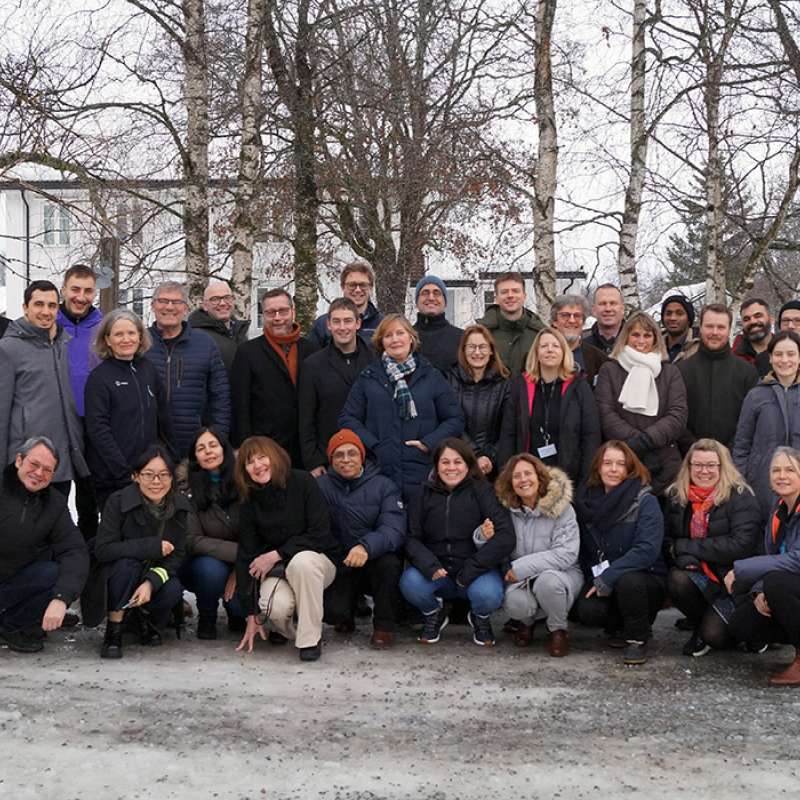Martin Pettersson
Research Scientist
Biography
My research focuses on diseases in trees and shrubs, specifically on Phytophthora and fungal diseases in nurseries, forests, Christmas tree fields and urban green areas. I am also involved in Christmas tree improvement projects where the goal is to find superior Christmas trees for Norwegian conditions. In 2013, I completed my Master of Science in Forestry at the Swedish University of Agricultural Sciences (SLU). In 2018, I achieved my PhD in Forestry and Environmental Resources at North Carolina State University (NCSU) and SLU. During my PhD, I worked on several projects on Phytophthora and fungal diseases in Christmas tree plantations together with researchers at NIBIO. Since August 2018, I have been working at the Department of Fungal Plant Pathology in Forestry, Agriculture and Horticulture at NIBIO.
Abstract
No abstract has been registered
Authors
Clive M. Brasier Niklaus J. Grünwald Tyler B. Bourret Francine Govers Bruno Scanu David E.L. Cooke Tanay Bose David L. Hawksworth Abad Gloria Abad Albarracin Victoria Albarracin Wael Alsultan Astrid E. Altamirano-Junqueira Arild R. Arifin Matthew J. Arnet Herbert Dustin R. Aumentado József Bakonyi Wei H. Belisle Alessandra Benigno John C. Bienapfl Guillaume J. Bilodeau Jaime E. Blair Leticia Botella Andrea Brandano Santa Olga Cacciola Ignazio Carbone Vanina L. Castroagudin Narayanan Chaendaekattu Jonathan D. Consford Tamara Corcobado Paul A. Covey Hazel A. Daniels Antonio Deidda Anne E. Dorrance Erika N. Dort André Drenth Fryni Drizou Edouard Evangelisti Sebastian N. Fajardo Yufeng Fang Christopher M. Ference Susan J. Frankel Erica M. Goss David I. Guest Giles E.S.J. Hardy Anna R.H. Harris Mehari Desta Hawku Kurt Heungens Chuanxue Hong Ian J. Horner Marília Horta Jung Olumayowa J. Iyanda Brittney-Aidan Jamieson Steven N. Jeffers Howard S. Judelson Muhammad Junaid Eleni Kalogeropoulou Sophien Kamoun Seogchan Kang Takao Kasuga Tomáš Kudláček Jared LeBoldus Christopher A. Lee DeWei Li Alejandro K. Llanos Horacio D. Lopez-Nicora Helena Machado Gaetano Magnano di San Lio Cristiana Maia Kajal Mandal Patricia Manosalva Frank N. Martin Michael E.H. Matson Rebecca L. McDougal John M. McDowell Richard W. Michelmore Ivan Milenković Salvatore Moricca Reza Mostowfizadeh-Ghalamfarsa Zoltán Á. Nagy Ekaterina V. Nikolaeva Paula Ortega-López Trudy Paap Camilo H. Parada-Rojas Francesca Peduto Hand Ana Pérez-Sierra Martin Pettersson Pramod Prasad Alina S. Puig Milica Raco Nasir A. Rajput Jean B. Ristaino Suzanne Rooney-Latham Michael F. Seidl Simon F. Shamoun Alejandro Solla Christoffel F.J. Spies Martha A. Sudermann Tedmund J. Swiecki Miaoying Tian Sucheta Tripathy Seiji Uematsu Kris Van Poucke Aikaterini E. Vichou Monika Walter Joan F. Webber Nari M. Williams Michael J. Wingfield Dhananjay Yadav Xiao Yang Thomas JungAbstract
No abstract has been registered

Division of Biotechnology and Plant Health
Plant Pest prevention through technology-guided monitoring and site-specific control
One of the ambitious goals of the Farm2Fork strategy is to reduce the use of pesticides in the EU by 50%. The expected increase in plant pests due to climate change, international trade and the intensification of food production systems offsets this target.

Division of Biotechnology and Plant Health
Plant Pest Prevention through technology-guided monitoring and site-specific control (PurPest)
The main objective of PurPest is to control serious plant pests during import and to manage them in the field by developing a unique concept enabling pest detection in a timely and non-invasive manner.
